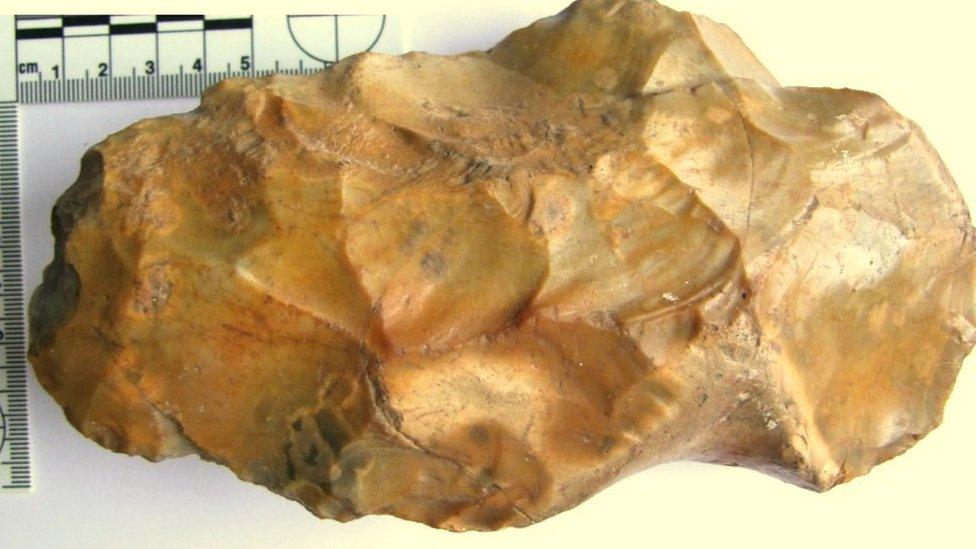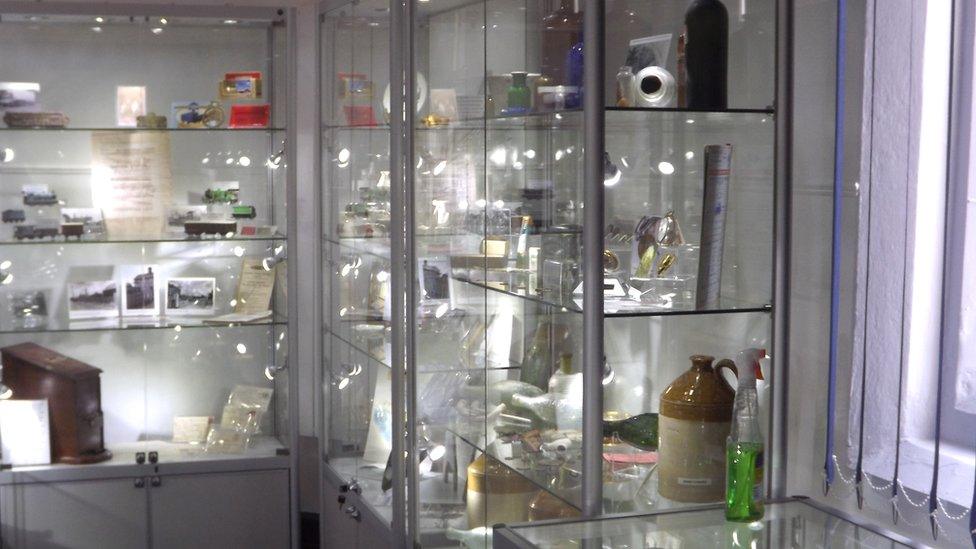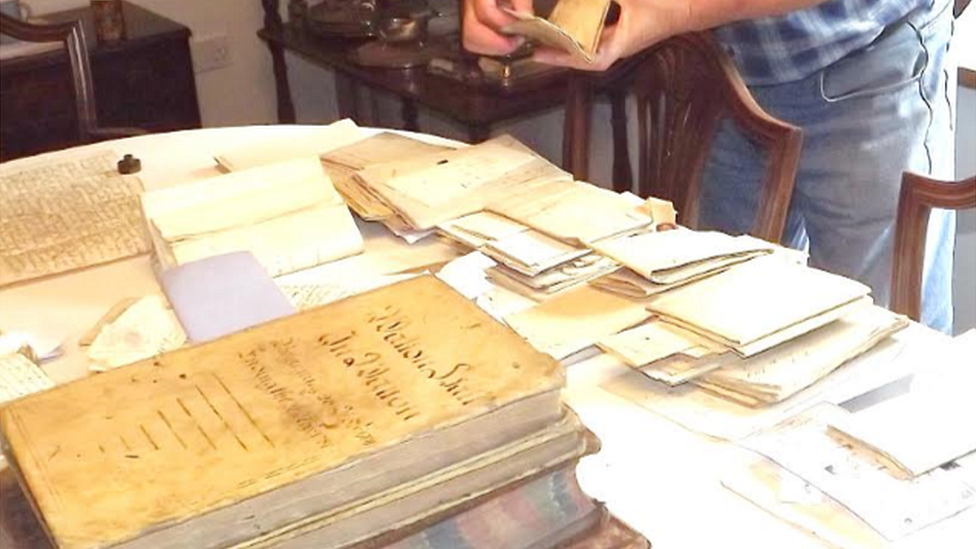Ancient hand axe displayed at Watton Museum
- Published

The hand axe is about 180mm long, 100mm wide and 55mm thick
A hand axe, which dates from up to 600,000 years ago, is the key exhibit of a new museum opening in Norfolk.
Museum 4 Watton has been made possible after being awarded more than £61,000 from the Heritage Lottery Fund.
Trustees said the British Museum believe the flint axe is from the Palaeolithic period, external and was "the second most important such item found in the East of England".
It was found in nearby Ashill on 1 January 2017.
The government's Portable Antiquities Scheme says it was made sometime between 600,000 BC and 150,000 BC.
The museum, in Wayland Hall, will be manned by volunteers and entry is free.

The museum is located in Wayland Hall, Watton
Organisers said the total cost of getting the museum up and running was £66,000, with further donations from Share Museums East, the Co-op, Norfolk Museums Service and the local chamber of commerce.
'So excited'
She said the idea for a museum came about in 2014 after Roman burial remains found in the town were sent to Northampton University because Watton had nowhere to display them.
Watton Town Council, which is also based at Wayland Hall, has provided two rooms for the museum on a free seven-year lease.
"We are so excited this has come together and so quickly," said trustee Jackie Greenbrook.
Those behind the venture said it has been formed to "collect, conserve and display artefacts and documents relating to Watton and the surrounding villages and make them available to all".
Also on display will be a full size replica of a Roman skeleton found in the town.
Documents and photographs are being digitised so they can be viewed on computer, including 17th Century legal documents from Watton Hall.

Records of the Court Baron of the Manor of Watton Hall
The museum opens to the public on 15 March.